The Temple of Khnum: A Must-Visit for Egyptologists and History Buffs
Are you a passionate admirer of Egyptian history and culture? Have you ever wondered about the origins of ancient Egyptian legends and beliefs? If so, there's a place you simply cannot miss.
Deep in the heart of Esna, you'll discover the incredible Temple of Khnum, an ancient structure steeped in myths and legends. With its intricate carvings, enchanting atmosphere, and rich cultural significance, this temple is a must-visit for history buffs and Egyptologists alike.
So, let's delve deeper into the wonders of this ancient temple and explore all the mysteries and secrets it holds!
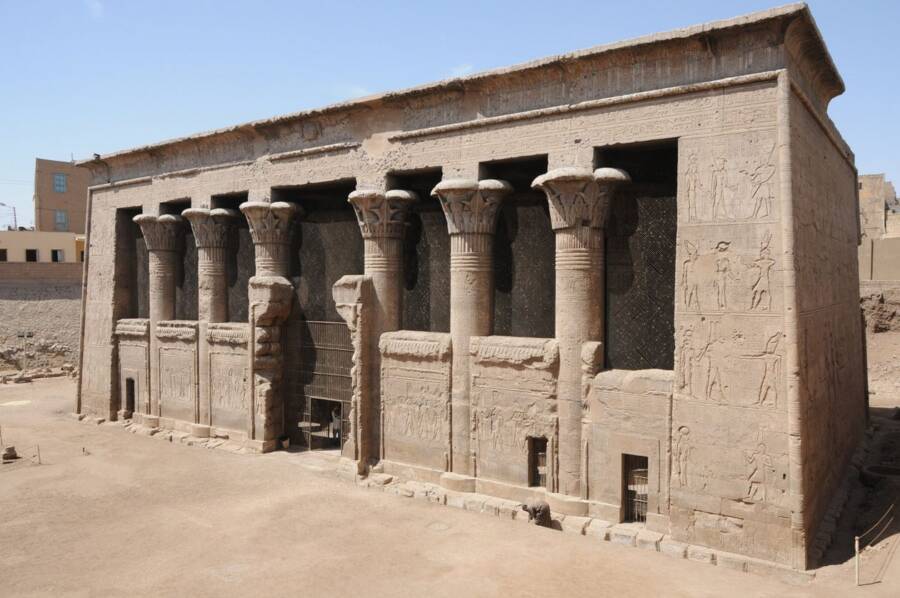
Introduction
Definition of the Temple of Khnum
The Temple of Khnum, located in Esna, Egypt, is an ancient and sacred structure dedicated to the god Khnum. Khnum, depicted with a ram's head, is the god of the Nile and creation. The temple stands as a testament to the rich history and deep cultural significance of ancient Egypt.
Constructed over 3,000 years ago, the temple is a remarkable example of ancient Egyptian architecture, with its impressive size and unique design. It consists of a large open court, twenty-four hypostyle halls, and stunning reliefs depicting scenes of worship and offerings to the gods. The temple also features a sanctuary surrounded by five chapels, each containing a statue of a god or goddess.
In addition to its religious importance, the temple served as a centre for trade and had a bustling atmosphere with gardens, public spaces, a library, and an education school. Today, visitors can explore the temple and witness its beauty, gaining a deep connection to the pride and history of ancient Egypt. [1][2]
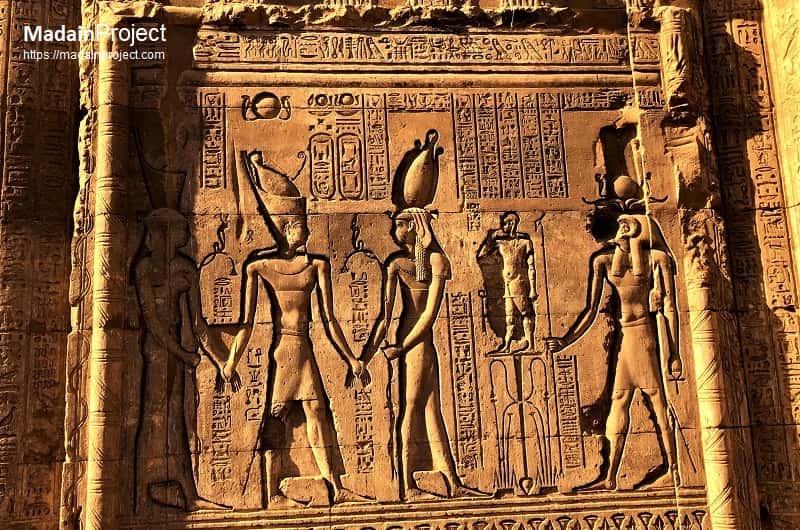
Significance of the Temple of Khnum
The Temple of Khnum holds immense significance for Egyptologists and history buffs alike. This remarkable temple, located in Esna, is dedicated to the god Khnum, the creator and source of all life according to ancient Egyptian beliefs. The temple also pays homage to other deities such as Menhit, Nebtu, Heka, and others. Its historical and cultural value cannot be overstated.
Visiting the Temple of Khnum provides a unique insight into ancient Egyptian civilization. The temple's architecture, art, and decorations offer a glimpse into the craftsmanship and artistic prowess of the ancient Egyptians. The intricately carved hieroglyphs and sculptures and the stunning pylon gate showcase the grandeur of Egyptian architecture in that era.
Moreover, the temple's location near the banks of the Nile River adds to its significance. The Nile River played a vital role in ancient Egyptian life, and the temple's dedication to the gods associated with the river emphasizes its importance in the religious and cultural practices of that time.
Exploring the Temple of Khnum allows visitors to immerse themselves in ancient Egypt's rich history and spirituality. It is a must-visit destination for those seeking a deeper understanding of this fascinating civilization. [3][4]
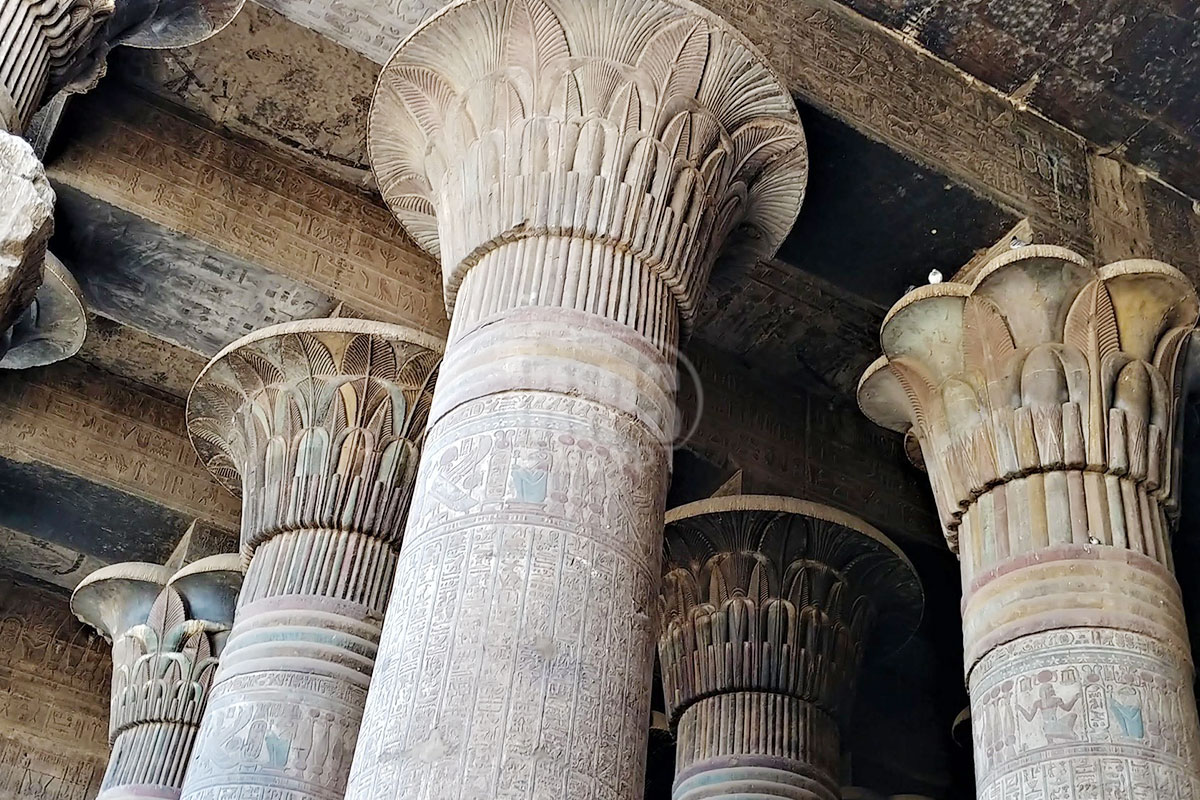
Importance of visiting the temple
Visiting the Temple of Khnum is an experience of immense importance for both Egyptologists and history buffs. This ancient temple, nestled in the city of Esna, offers a glimpse into ancient Egypt's rich cultural and religious heritage. Exploring its halls and chambers allows visitors to connect with a significant period in human history.
Historical significance
One of the primary reasons visiting the Temple of Khnum is essential is the valuable insights it provides into the history of ancient Egypt. With its origins dating back to the New Kingdom period, this well-preserved temple bears witness to that era's architectural and artistic achievements. By walking through its halls, visitors immerse themselves in a world where gods and mortals coexist in elaborate rituals and ceremonies.
Religious significance
Beyond its historical significance, the Temple of Khnum offers a unique opportunity to understand the gods worshipped in ancient Egypt. As the temple dedicated to Khnum, the ram-headed god of creation and fertility, it provides a deep understanding of the importance of this deity in the religious beliefs of the time. By observing the intricate carvings and symbols within the temple, visitors can gain insights into ancient Egyptians' religious practices and beliefs.
Architectural significance
Visiting the Temple of Khnum also allows one to appreciate this ancient structure's remarkable architecture and design. The temple's grandeur is apparent in its imposing entrance gate, towering columns, and meticulously carved reliefs. Observing these architectural marvels up close fosters admiration for ancient Egyptian craftsmanship and offers a deeper understanding of the cultural significance of such monuments.
Personal reflection
Apart from its historical, religious, and architectural importance, visiting the Temple of Khnum offers a memorable and enriching experience. The serene and sacred atmosphere within the temple provides a tranquil setting for reflection and contemplation. It is a place where visitors can escape the modern world's hustle and bustle and connect with ancient wisdom and spirituality.
The Temple of Khnum is a must-visit destination for Egyptologists and history buffs. Its historical significance, insight into ancient Egyptian religious beliefs, awe-inspiring architecture, and the opportunity for personal reflection make it an experience that promises to leave a lasting impression on all who have the privilege to explore its sacred grounds.
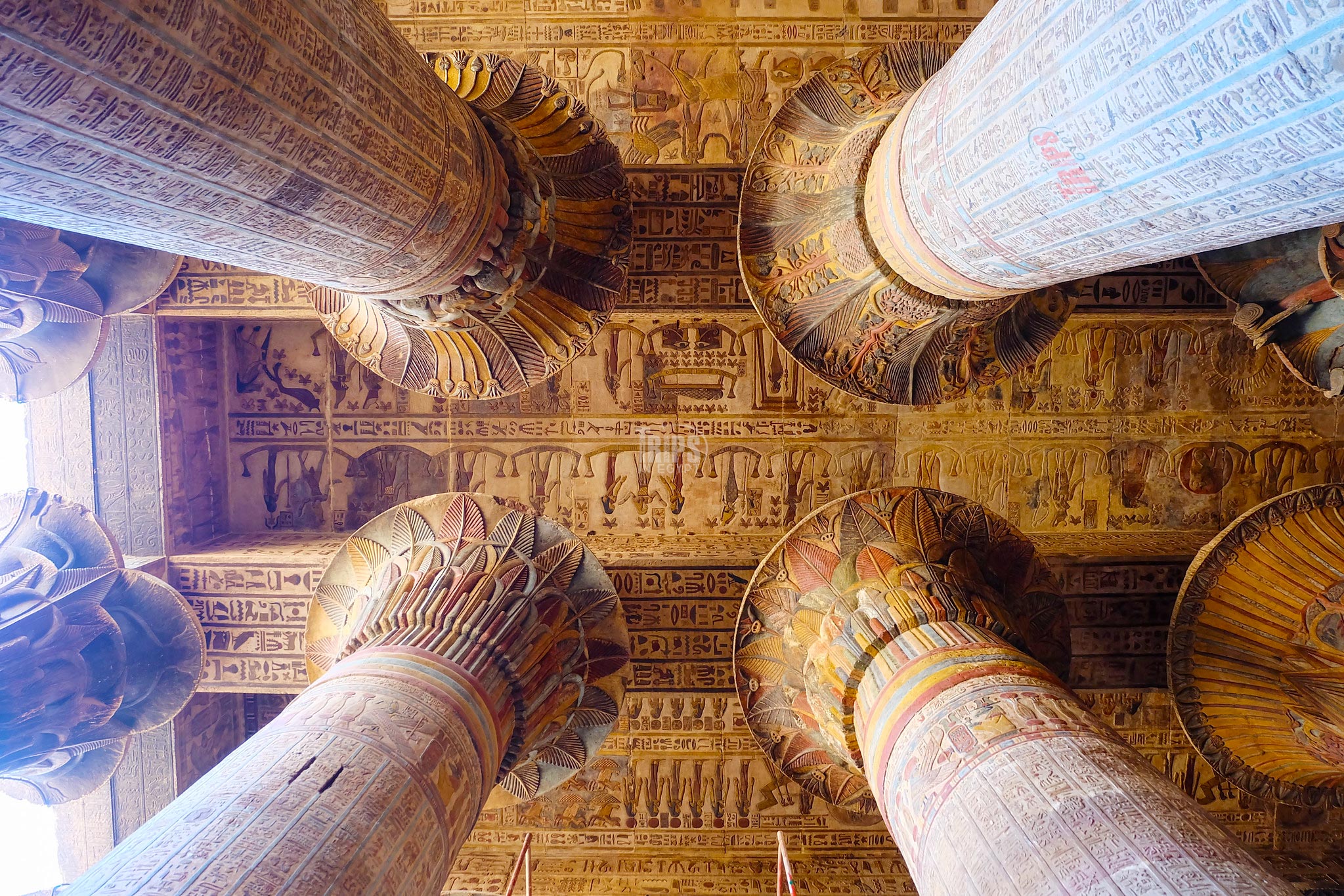
Historical Background
The history of the temple
The Temple of Khnum, also known as the Temple of Esna, is a fascinating historical site with immense significance in ancient Egypt.
Construction of this magnificent temple began during the reign of King Tuthmosis III in the 18th Dynasty, around 3,000 years ago. Dedicated to the god Khnum, the temple played a crucial role in ancient Egyptian religious practices and was a centre for trade and cultural activities in the region. Over the centuries, the temple was destroyed and later restored by various Roman emperors.
Today, visitors can explore the temple’s impressive architecture, which includes a large open court and twenty-four hypostyle halls adorned with exquisite reliefs and paintings. The temple is renowned for its unique design, featuring columns decorated with lotus and papyrus motifs. Notably, the temple’s walls depict scenes of offerings and rituals performed by ancient Egyptian kings and Roman emperors.
Visiting the Temple of Khnum is a truly enriching experience, offering a glimpse into ancient Egypt's rich history and cultural heritage. Whether you are an Egyptologist or a history enthusiast, this awe-inspiring temple is a must-visit destination that will leave you in awe of the remarkable achievements of the ancient Egyptians. [7][8]
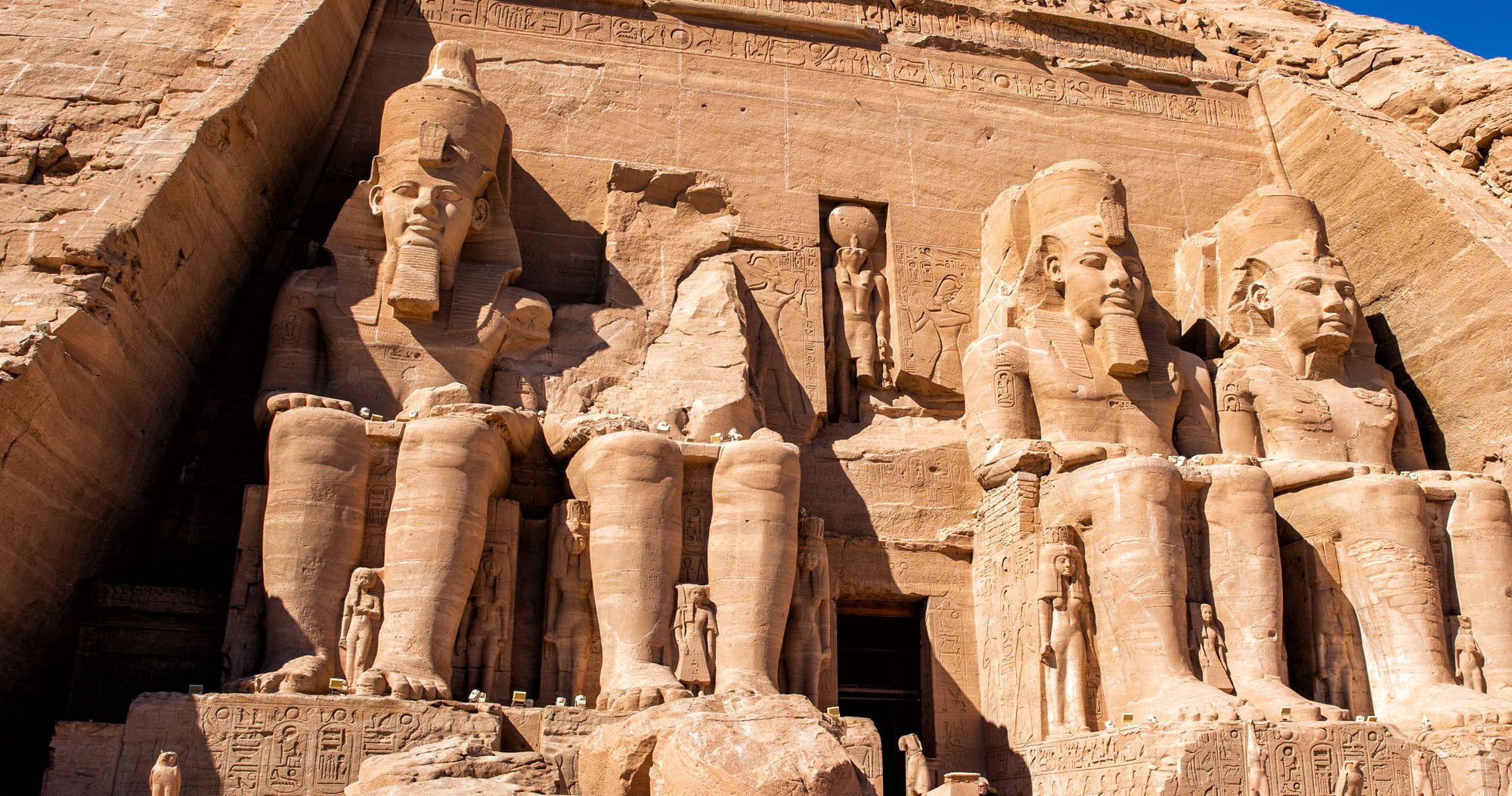
The gods worshipped in the temple.
The Temple of Khnum, located in Egypt, was dedicated to worshipping the god Khnum, considered the god of creation and the source of the Nile River.
Khnum was one of the oldest worshipped gods in Egypt, dating back to the 1st dynasty. He was associated with many important aspects of life, including water, fertility, and the creation of humankind. Khnum was often depicted with the head of a ram and a man's hands, symbolising his connection to water and his ability to create and shape life.
The temple served as a place of worship and reverence for Khnum and other associated gods, such as Horus and Isis. It was a significant centre for trade and education, offering various activities and amenities for the ancient Egyptians.
Today, the Temple of Khnum stands as a remarkable example of ancient Egyptian architecture and a testament to the creativity and dedication of its builders. Visiting the temple provides a unique opportunity to delve into ancient Egypt's rich history and culture. [9][10]

The Significance of the Temple in Ancient Egypt
The Temple of Khnum, also known as the Temple of Esna, holds immense significance in ancient Egypt.
This magnificent structure, built over 3,000 years ago, is a testament to the ancient Egyptians' religious beliefs and architectural prowess. The temple's dedication to Khnum, the god of creation and the Nile, highlights the profound importance of the Nile in Egyptian culture.
The temple served not only as a place of worship for Khnum but also as a centre for trade and education. It housed a library and a school, showcasing the intellectual and cultural vitality of the ancient Egyptians.
The temple's unique design and construction are awe-inspiring, with its carved hieroglyphs, sculptures, and massive pylon gate. The intricate art and decoration within the temple further reveal the artistic prowess of the ancient Egyptians.
Visiting the Temple of Khnum provides a deep connection to the pride and history of ancient Egypt, making it a must-visit for Egyptologists and history buffs. [11][12]

Architecture and Design
Overview of the temple’s architecture
The Temple of Khnum at Esna is an architectural marvel that leaves visitors in awe.
Built of red sandstone, the temple's portico consists of six rows of columns, each with unique lotus-leaf capitals. The temple also features a well-preserved hypostyle hall, added by the Romans, adorned with intricate carvings dating back to the 3rd century AD.
The temple's roof is supported by eighteen columns with floral capitals in the form of palm leaves, lotus buds, and papyrus fans. The ceiling displays stunning astronomical scenes, while the pillars are covered in hieroglyphics depicting temple rituals.
Inside the temple, you'll find hymns to Khnum, praising him as the creator of all. The walls also showcase Roman emperors making offerings to the local god. Outside, an underground pump works diligently to maintain the groundwater levels around the temple.
Visiting this temple allows you to witness the grandeur and history of ancient Egyptian architecture firsthand. [13][14]
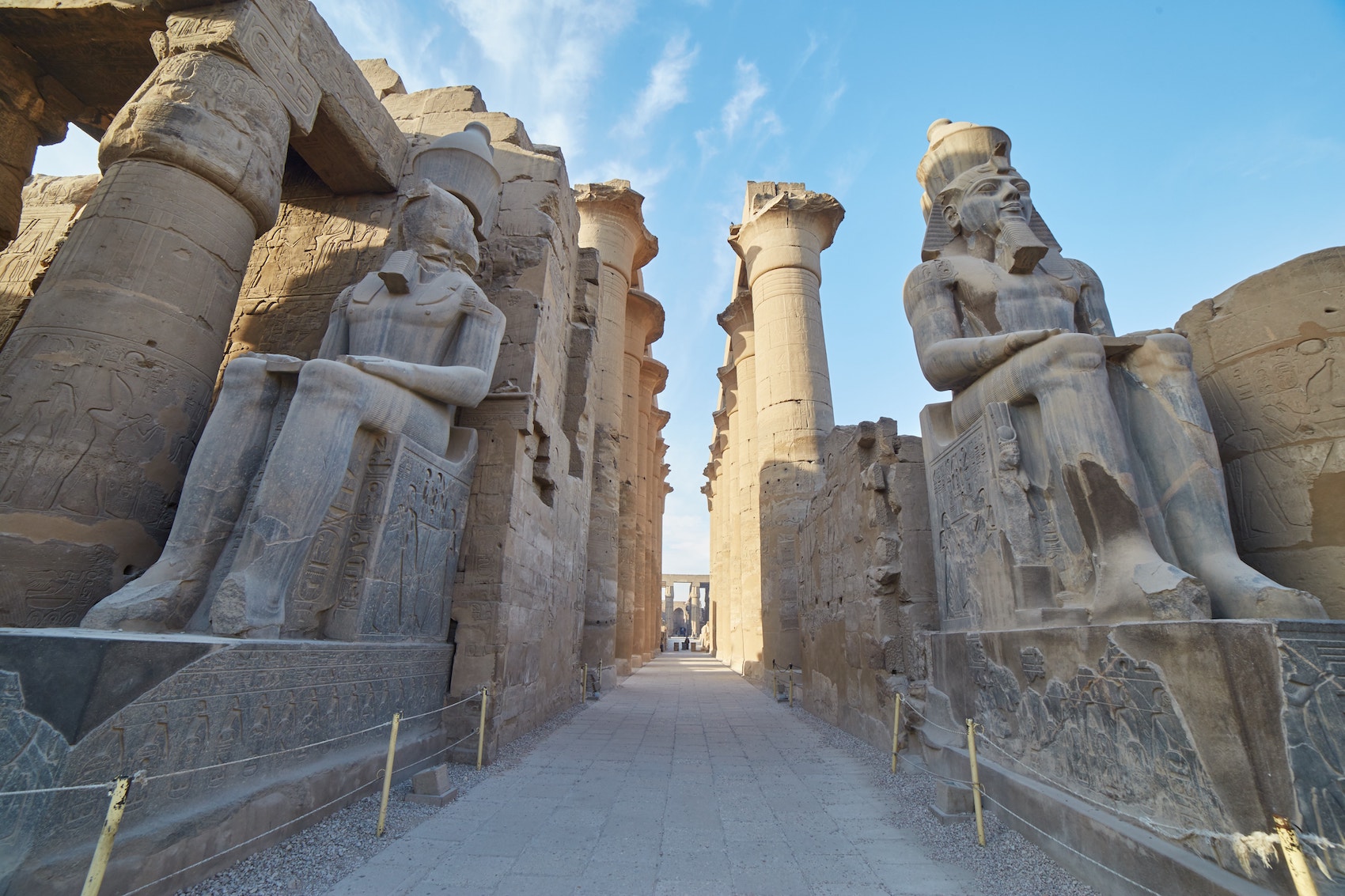
Features of the temple’s design
The Temple of Khnum at Esna is renowned for its unique and stunning architecture. Built of red sandstone, the temple’s design is a testament to ancient Egyptian creativity and craftsmanship.
One of the standout features of the temple is its portico, which consists of six rows of four columns each. These columns are adorned with lotus-leaf capitals, adding a touch of elegance to the temple’s design. While all the columns differ, they create a harmonious and visually appealing structure.
Another notable feature of the temple’s design is the presence of a large open court and twenty-four hypostyle halls. The walls of these halls are adorned with intricate carvings and scenes of offerings to the gods, providing a glimpse into the religious practices of ancient Egypt. The temple’s sanctuary is surrounded by five chapels, each housing a statue of a different god or goddess.
With its impressive size and well-preserved carvings, the Temple of Khnum is a must-visit for history buffs and Egyptologists alike. Exploring its unique architectural features and intricate designs will leave visitors in awe of the ancient Egyptians’ skill and creativity. [15][16]

Unique elements of the temple’s construction
The Temple of Khnum in Egypt stands out for its unique construction elements.
- One remarkable feature is the use of granite, a highly valued stone by the ancient Egyptians. The pharaohs set up numerous quarries in the Aswan region, where the Temple of Khnum is located, to extract this precious material.
- Another intriguing aspect is the method used to shape the massive obelisks found in the temple. Workers created slots in the stone, inserted moistened wooden wedges, and let the expanding wood crack the rock. They then used dolerite balls to shape the obelisks. A large crack in the abandoned Unfinished Obelisk provides a glimpse into the challenges faced during construction.
- The temple's architecture also raises questions about the construction process. The narrow trench surrounding the obelisk presents difficulties in waste removal and extraction. Furthermore, the precise carving of hieroglyphs using supposedly limited tools adds to the mystery.
These unique elements of the Temple of Khnum's construction make it a fascinating site for both Egyptologists and history buffs. [17][18]

Art and Decoration
Overview of the temple’s art and decoration
The Temple of Khnum in Esna, Upper Egypt, is a treasure trove of ancient Egyptian art and decoration. The temple's walls and ceilings are adorned with brilliantly coloured paintings that depict various gods and goddesses, as well as scenes from daily life in ancient Egypt.
Recent restoration work has revealed even more breathtaking details, including 46 previously unknown depictions of the goddesses Nekhbet and Wadjet on the ceiling. These depictions show Nekhbet as a vulture wearing the crown of Upper Egypt and Wadjet as a cobra with the crown of Lower Egypt. The level of detail and vibrant colours in these paintings are truly astounding.
So far, more than half of the ceiling and several columns have been cleaned, conserved, and documented, with plans to complete the entire structure. This ongoing project aims to preserve the temple's art and decoration and study the inscriptions and their connections to the images inside the temple.
Visiting the Temple of Khnum is a unique opportunity to witness the beauty and artistry of ancient Egypt up close. [19][20]

Essential things to know before visiting the temple
Before visiting the Temple of Khnum, there are some essential things you should know to ensure a smooth and enjoyable experience.
- Historical significance: The temple was built over 3,000 years ago and is dedicated to the god Khnum, the god of creation and the source of the Nile River. It is one of the few ancient temples with an intact roof and elaborate art and decoration that remains today.
- Location: The temple is situated in Esna, a town about 50 kilometres south of Luxor. It is easily accessible by car or by booking a guided tour. Esna has its own attractions, such as a popular covered market and a weekly animal market. Make sure to plan enough time to explore these sites as well.
- Clothing: It is recommended to wear comfortable clothing, especially during the summer months when temperatures can be high. Lightweight, breathable fabrics like cotton or linen are best and don't forget to apply sunblock. Wear comfortable shoes as well, as the temple grounds may have uneven terrain.
By knowing these essential things before visiting the Temple of Khnum, you can make the most out of your experience and truly appreciate this remarkable ancient site's beauty and historical significance. [21][22]
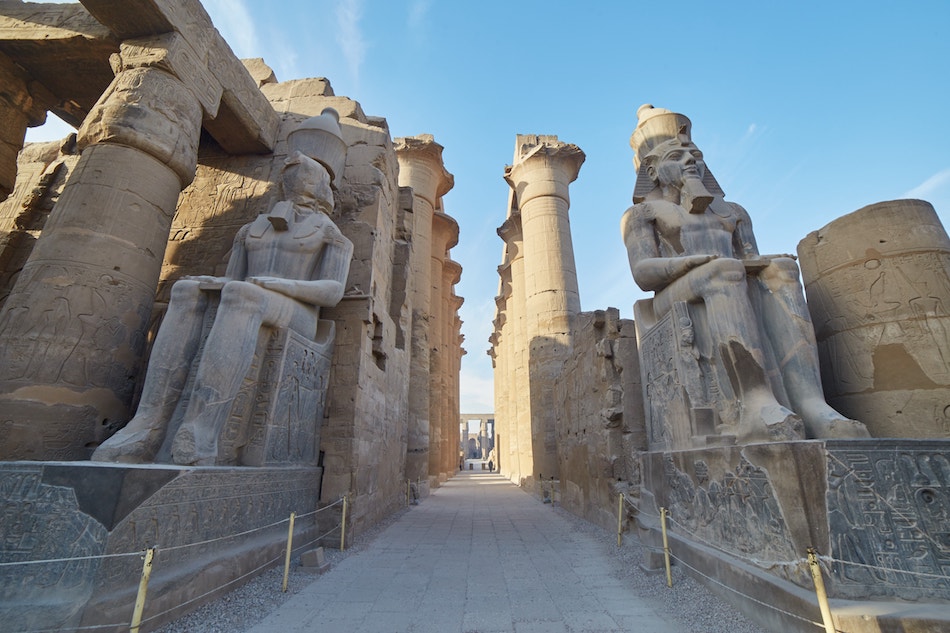
Tips for making the most out of your visit
- Plan your visit ahead of time. Research the temple's opening hours and any restrictions or regulations that may be in place. This will ensure that you can fully enjoy your time at the temple.
- Hire a knowledgeable local guide. They can provide insights and information about the temple's history and significance and help you navigate its complex architecture.
- Take your time to explore the temple and its surroundings. Don't rush through the visit, but instead, take a moment to appreciate the intricate artwork and detailed carvings that adorn the walls.
- Bring comfortable shoes and clothing. A fair amount of walking may be involved, so make sure you're comfortable.
- Don't forget your camera! Capture the memorable moments and stunning views at the temple.
By following these tips, you can make the most of your visit to the Temple of Khnum and have a truly enriching and memorable experience. [23][24]

Final thoughts on visiting the temple
The Temple of Khnum in Egypt is a must-visit for Egyptologists and history buffs. This ancient temple holds immense significance and offers a unique insight into Egypt's rich history and culture. The temple, dedicated to the god Khnum, is a testament to the power of faith and the resilience of the Egyptian spirit.
From its magnificent architecture to its intricate art and decorations, the Temple of Khnum is a marvel. The temple's design, featuring a large open court and twenty-four hypostyle halls, showcases the unique creativity of ancient Egyptian architecture. The walls of the aisles are adorned with stunning hieroglyphs and reliefs, depicting scenes of worship and offerings to the gods.
Visiting the temple allows you to immerse yourself in the ancient world of Egypt and gain a deeper understanding of its rich history. Whether exploring the temple's history, learning about the gods worshipped within its walls, or admiring its unique construction, every aspect of the Temple of Khnum offers a fascinating glimpse into the ancient Egyptian civilisation.
To make the most out of your visit, it is recommended to plan and be prepared. Wear comfortable clothing and footwear, and don't forget to bring sunblock and water, as the temperatures can be quite high. Hiring a knowledgeable guide can also enhance your experience and provide valuable insights into the temple's significance.
Visiting the Temple of Khnum is an unforgettable experience for any Egyptologist or history enthusiast. Its rich history, magnificent architecture, and unique art and decorations make it a must-see attraction in Egypt. So, if you're planning a trip to Egypt, include the Temple of Khnum in your itinerary and prepare to be amazed by this ancient marvel. [25][26]
